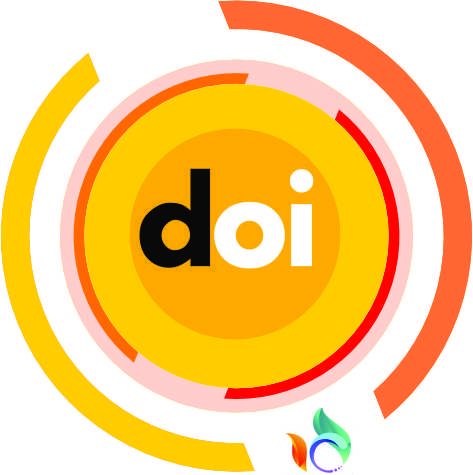Uji Akurasi Arah Kiblat Menggunakan Azimut Bulan Purnama
DOI:
https://doi.org/10.47766/astroislamica.v1i1.681Keywords:
Full Moon, Islamic Astronomy, QiblaAbstract
The community often faces problems and problems related to the worship of Muslims, Muslims are also required to carry out obligations that are important factors in the Islamic religion, especially the obligation of prayer that leads to the Kakbah. So far, the measurement of the direction of the Qibla in most methods always uses the Sun, the Sun is one of the celestial bodies that can be used as a reference to measure the direction of the Qibla either in the shadow of the Sun or the azimuth of the Sun. In this case, the author wants to test using the azimuth of the full moon, because there are still many who do not know that the measurement of the direction of the Qibla can not only be with the Sun but can also use the Moon. To find out the extent of the accuracy of the results of measuring the direction of the Qibla with the azimuth of the Moon, the authors formulated several research questions. 1 what is the technique of measuring the direction of the qibla using the azimuth of the full moon? 2 what is the accuracy of qibla direction using the azimuth of the full moon? To answer the research question, the author uses a qualitative research method with an astronomical approach, the primary data used are in the form of trial results of measuring the direction of the Qibla during the full Moon, namely the night of the 14th, and 16th which is marked with a lunar illumination value above 95 percent, and night 15 which is marked with a Lunar illumination value of 100 percent. on the first day obtained a value difference of 00° 03' 50", on the second day obtained a difference in value of 0° 02' 20 and on the third day obtained a difference in value of 0° 02' 12 The collected data were analyzed by descriptive analysis method. The results of the study can be concluded that the technique of measuring the direction of the Qibla using the azimuth of the full Moon is the same as the technique of measuring the direction of the Qibla by using the azimuth of the Sun. Meanwhile, the accuracy is still very accurate, where the results of the trial measurement of the direction of the Qibla by using the azimuth of the full Moon only have an average difference of 00 ° 02ʼ 12 " arc from the results of measuring the direction of the Qibla using the Azimuth of the Sun.References
Abu Daud. Sunan Abi Daud. Bairud: Darul al-Fikri, t.t.
Abu Sabda. Ilmu Falak, Rumusan Syar’i dan Astronomi. Waktu Shalat dan Arah Kiblat. 1. Bandung: Persis Pers, 2019.
Arwin Juli Rakhmadi Butar-butar. Pengantar Ilmu Falak: Teori dan Praktik. Medan: LPPM UISU, 2016.
Bashori, Muhammad Hadi. Pengantar Ilmu Falak: Pedoman Lengkap Tentang Teori dan Praktik Hisab, Arah Kiblat, Waktu Salat, Awal Bulan Qamariah & Gerhana. Pustaka Al Kautsar, 2015.
Ismail, Ismail. “Standar Operasional Prosedur (SOP) Kalibrasi Arah Kiblat Masjid Di Era Digital.” Al-Marshad: Jurnal Astronomi Islam Dan Ilmu-Ilmu Berkaitan 5, no. 1 (2 Juni 2019). https://doi.org/10.30596/jam.v5i1.3126.
———. “Urgensi Dan Legitimasi Fatwa Majelis Permusyawaratan Ulama Aceh Nomor 3 Tahun 2018 Tentang Penetapan Arah Kiblat.” Al-Manahij: Jurnal Kajian Hukum Islam 14, no. 1 (2 Juni 2020): 87–98. https://doi.org/10.24090/mnh.v14i1.3669.
Ismail, Ismail, Dikson T. Yasin, dan Zulfiah. “Toleransi Pelencengan Arah Kiblat Di Indonesia Perspektif Ilmu Falak Dan Hukum Islam.” Al-Mizan 17, no. 1 (30 Juni 2021): 115–38. https://doi.org/10.30603/am.v17i1.2070.
Kamal, Mustofa. “Teknik Penentuan Arah Kiblat Menggunakan Aplikasi Google Earth dan Kompas Kiblat RHI.” Madaniyah 5, no. 2 (31 Agustus 2015): 176–97.
Raco, Jozef. “Metode Penelitian Kualitatif: Jenis, Karakteristik dan Keunggulannya,” 2018.
Slamet Hambali. Ilmu Falak, Arah Kiblat Setiap Saat. Yogyakarta: Pustaka Ilmu, 2013.
Wahbah Az-zuhaili. al-Fiqh al-Islamiah wa Adillatuhu. 2. Suriah: Darul al-Fikri, 1985.
Downloads
Published
Issue
Section
License
Copyright (c) 2022 Dewi Rahayu, Laiyina Ukhti

This work is licensed under a Creative Commons Attribution-ShareAlike 4.0 International License.









